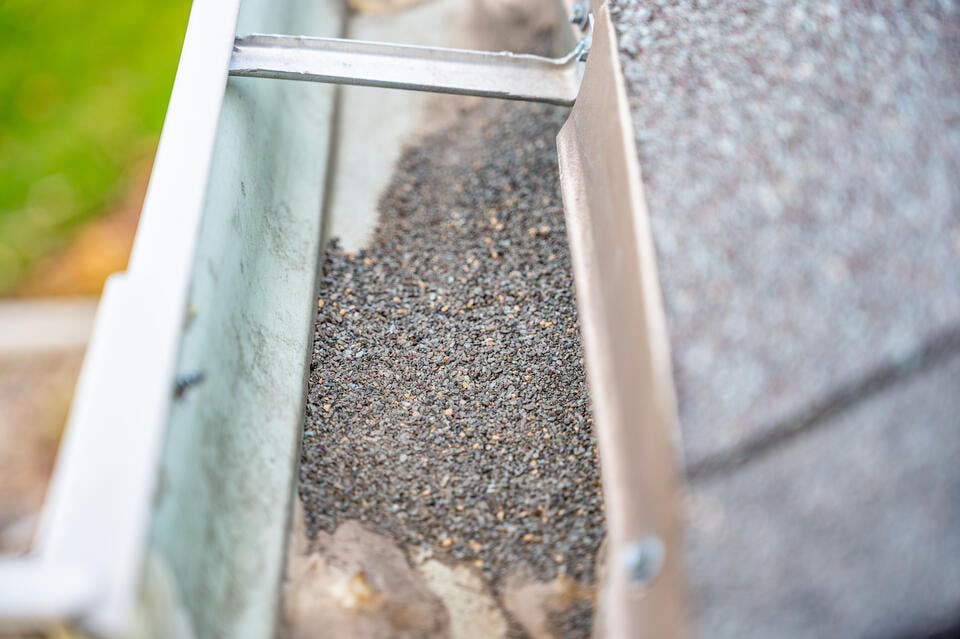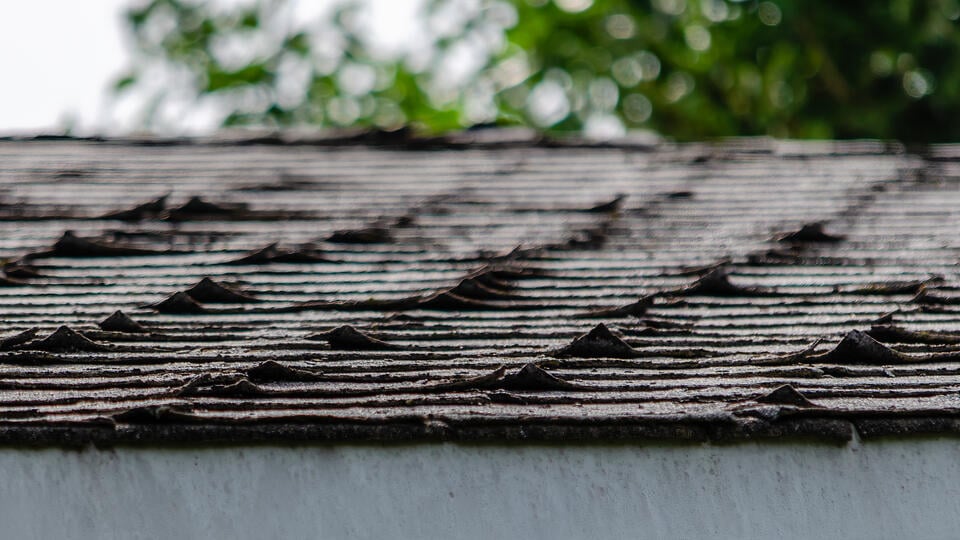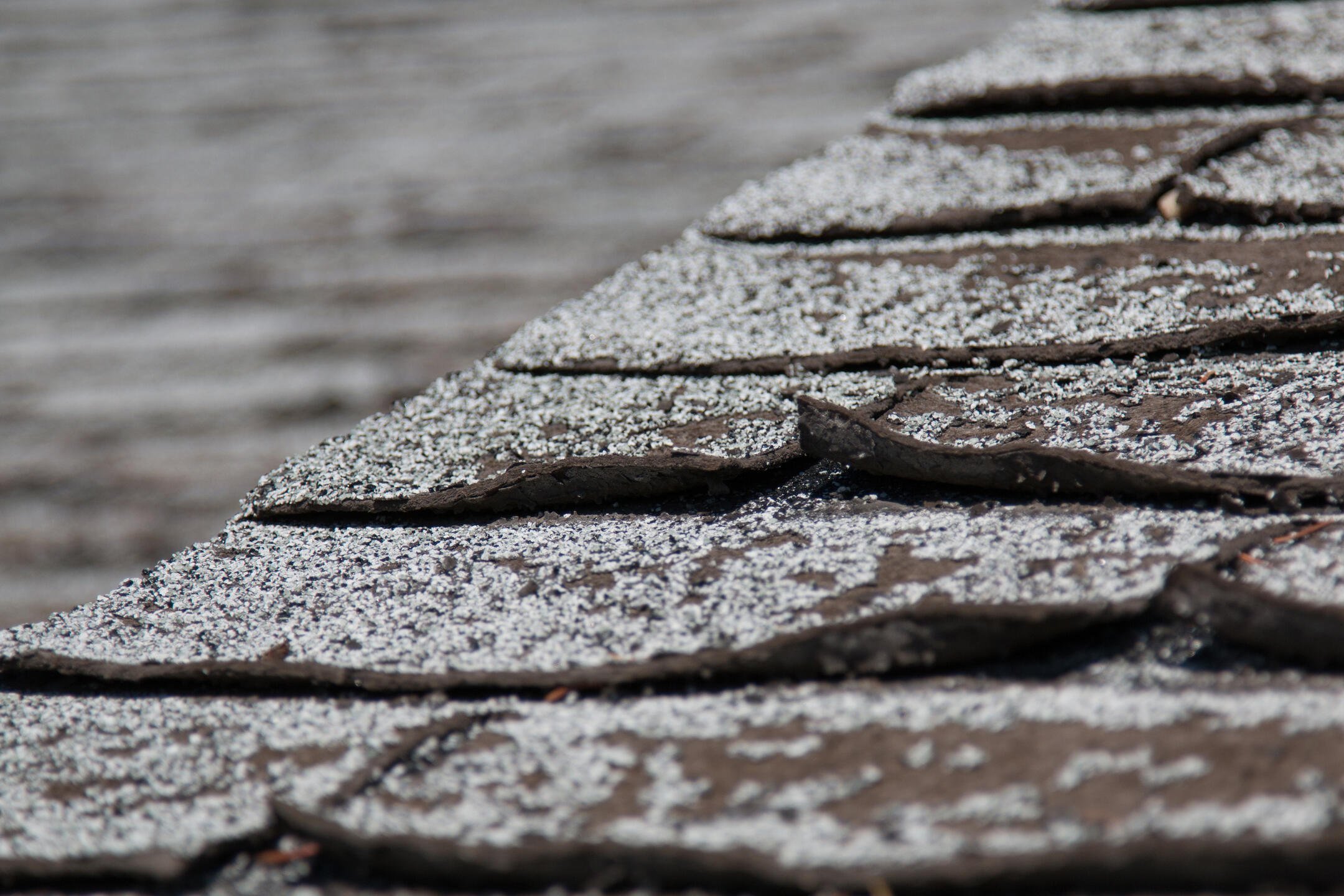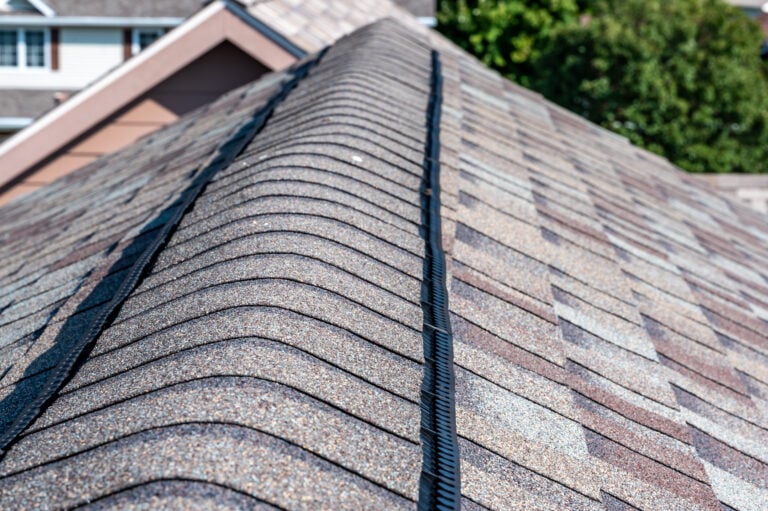Granule loss on shingles is a common concern for homeowners, as it can affect the aesthetic appeal and longevity of your roof. Understanding the causes of granule loss is crucial for maintaining a durable and effective roofing system. In this comprehensive guide, we will explore the various factors contributing to granule loss and provide insights into how homeowners can address this issue effectively, including:
- Understanding Shingle Granule Loss
- Common Reasons Shingle Might Lose Granules
- 8 Signs of Granule Loss on Shingles
- Prevention and Maintenance Tips
🤔 Understanding Shingle Granule Loss

Shingle granule loss refers to the shedding or erosion of the small, mineral particles that are embedded onto the surface of asphalt shingles. These granules play a vital role in protecting the shingles from ultraviolet rays and other weather elements, as well as providing color and aesthetic appeal to the roof. Over time, and under certain conditions, these granules can begin to fall off. This loss may be due to a variety of factors including natural wear and tear, environmental conditions, or poor installation practices.
Impact of Granule Loss on Your Roof
The impact of granule loss on a roof can be significant. Without the protective layer of granules, shingles become more susceptible to damage from UV radiation, which can accelerate the breakdown of the underlying asphalt material. This can lead to a reduction in the overall lifespan of the roof. Furthermore, as more granules are lost, the roof may begin to develop bald spots, which not only detract from the aesthetic appeal but may also lead to leaks and water infiltration problems. Addressing granule loss in a timely manner is essential to maintaining the health and performance of any roofing system. Regular inspections and ongoing maintenance are recommended to detect early signs of granule loss and take appropriate corrective actions.
👉 Common Reasons Shingle Might Lose Granules
Understanding why shingles lose granules is crucial for maintaining a roof’s integrity and longevity. Factors like weathering and aging can degrade shingles over time, while poor installation and lack of maintenance can exacerbate the issue; additionally, environmental factors such as extreme temperatures and UV exposure can significantly impact shingle durability.
Weathering and Aging
Over time, all roofs experience some degree of weathering and aging. This natural process can lead to granule loss on shingles as the protective granules gradually loosen and detach. While aging is inevitable, regular maintenance and timely roof inspections can help mitigate its effects.
Effects Of UV Exposure
Sunlight, particularly UV rays, plays a significant role in granule loss. Prolonged exposure can cause the asphalt in shingles to degrade, resulting in the loss of granules that shield the underlying material from further damage. Ensuring proper attic ventilation can help reduce the impact of UV exposure on your roof.
Weather Conditions
Extreme weather conditions, such as hailstorms, heavy rain, or strong winds, can accelerate granule loss. The constant battering from harsh weather can loosen granules, leaving your roof vulnerable. It’s essential to conduct regular inspections, especially after severe weather events, to assess any damage and address it promptly.
Poor Installation and Maintenance
Shingle installation plays a crucial role in preventing granule loss. Poorly installed shingles are more susceptible to damage and granule loss. Hiring a reputable roofing contractor ensures that your shingles are installed correctly, providing optimal protection and longevity.
Neglected Roof Maintenance
Regular maintenance is vital for preserving the integrity of your roofing system. Neglecting routine inspections and maintenance can lead to granule loss going unnoticed until it becomes a more significant problem. Create a maintenance schedule to keep your roof in top condition and address any issues promptly.
Common Installation Errors
Improperly installed shingles, inadequate ventilation, and using low-quality materials can all contribute to granule loss. Ensure your roofing contractor uses industry-standard practices and high-quality materials to prevent potential problems down the line.
Impact of Environmental Factors
Tree Branches
Overhanging tree branches can cause granule loss by rubbing against shingles or dropping debris onto the roof. Regular trimming of tree branches near your roof can help prevent unnecessary damage and granule loss.
Pollution And Chemical Exposure
Airborne pollutants and chemicals can negatively affect the integrity of your shingles. Substances like acid rain can accelerate granule loss by breaking down the asphalt layer. Stay informed about local environmental conditions and take preventive measures to protect your roof.
Wildlife Interactions
Birds, squirrels, and other wildlife can cause granule loss by pecking or gnawing on shingles. To minimize wildlife-related damage, consider installing deterrents and ensuring your roof is free from enticing food sources or nesting materials.
⚠️ 8 Signs of Granule Loss on Shingles

Identifying granule loss on shingles is crucial because it can indicate the onset of shingle deterioration, leading to reduced protection for your roof. Early detection allows homeowners to take necessary action to prevent more extensive damage and costly repairs.
1. Visual Inspection
Regularly inspecting your roof is essential to catch any signs of granule loss early. Look closely for bare spots where the granules have worn away, revealing the underlying asphalt. These areas can expose your roof to the elements, leading to further damage. Uneven coloration can also indicate granule loss, as the affected areas may appear darker or shinier compared to the rest of the shingles. Make it a habit to check your roof after heavy weather or extreme temperature changes, as these conditions can accelerate granule loss.
2. Accumulation in Gutters
Granules often wash down into gutters, especially after rain or storms. If you notice a significant amount of granules collected in your gutters, it’s a strong indicator that your shingles are deteriorating. Regular gutter maintenance is important, not just for drainage, but also for monitoring the health of your roof. Consider installing gutter guards to reduce debris accumulation, but remember that they won’t prevent granules from washing off.
3. Bald Patches on Shingles
Bald patches or missing granules on shingles are alarming signs that should not be overlooked. These patches can lead to further exposure of your roof to sunlight and moisture, increasing the risk of leaks and structural damage. If you notice any bald spots, it’s crucial to call a roofing professional as soon as possible. They can provide an expert assessment and recommend whether repairs or a full roof replacement is necessary to maintain the integrity of your home.
4. Increased Energy Bills
A sudden spike in energy bills can be linked to granule loss on your shingles. The granules on shingles serve as a protective layer that reflects sunlight, helping to keep your home cooler. When they wear away, the exposed asphalt absorbs more heat, leading to increased cooling demands from your air conditioning system. Monitoring your energy bills can help you catch these changes early, prompting you to investigate potential roofing issues before they escalate.
5. Shingle Discoloration
Fading or discoloration of shingles is not just an aesthetic issue; it can signal granule loss as well. When the protective granules begin to wear away, the shingles underneath can become vulnerable to UV rays, moisture, and temperature fluctuations. If you notice that your shingles have lost their vibrant color or appear dull, it might be time to evaluate the condition of your roof. Discoloration can also affect your home’s curb appeal and resale value, making timely inspections even more important.
6. Water Leaks
If you start noticing water stains on your ceilings or walls, it may be linked to granule loss and damaged shingles. Granule loss can compromise the waterproofing capabilities of your roof, allowing water to seep through and cause leaks. Addressing leaks promptly is critical, as prolonged exposure to moisture can lead to serious structural damage, mold growth, and costly repairs. Always check your roof and attic for signs of moisture if you experience leaks to determine if they are related to shingle issues.
7. Increased Roof Age
As your roof ages, the risk of granule loss becomes more significant. Most asphalt shingles have a lifespan of 20-30 years, depending on the quality and maintenance. If your roof is nearing or has surpassed its expected lifespan, it’s vital to be vigilant for any signs of deterioration, including granule loss. Regular inspections and maintenance can extend the life of your roof, but knowing when it’s time to replace it is essential for protecting your home.
8. Granules in Landscaping
Finding granules in your yard or flower beds can be a clear sign that your shingles are shedding. These granules often accumulate below the roof line, indicating that the protective layer is wearing away. If you observe a buildup of granules in your landscaping, it’s a good idea to investigate the condition of your roof further. This can help you identify potential problems early and take action before they lead to more significant damage. Keeping an eye on your property can help you maintain both its appearance and structural integrity.
💡 Prevention and Maintenance Tips

Extend your roof’s lifespan and prevent costly repairs with regular maintenance. Regular inspections and upkeep can identify issues early, ensuring your home remains protected from the elements.
- Regular roof inspections: Scheduling regular roof inspections can help identify and address granule loss before it escalates. Professional inspections can provide valuable insights into the condition of your roof and recommend necessary repairs or maintenance.
- Professional roof cleaning: Professional roof cleaning services can help remove moss, algae, and debris that contribute to granule loss. Keeping your roof clean and free from organic growth will preserve the integrity of your shingles and extend their lifespan.
- Timely roof repairs: Addressing minor repairs promptly can prevent them from developing into major issues. Timely repairs, such as replacing damaged shingles or fixing leaks, are essential for maintaining a strong and durable roofing system.
🙌 Extend Your Roof’s Lifespan with Palladium Roofing
Granule loss on shingles is a common issue that can affect the longevity and performance of your roof. By understanding the causes, signs, and prevention methods, homeowners can take proactive steps to maintain their roofing system. Trust Palladium Roofing to provide expert guidance and quality roofing services to protect your home. Contact us today for a complimentary inspection and ensure your roof remains in top condition.





